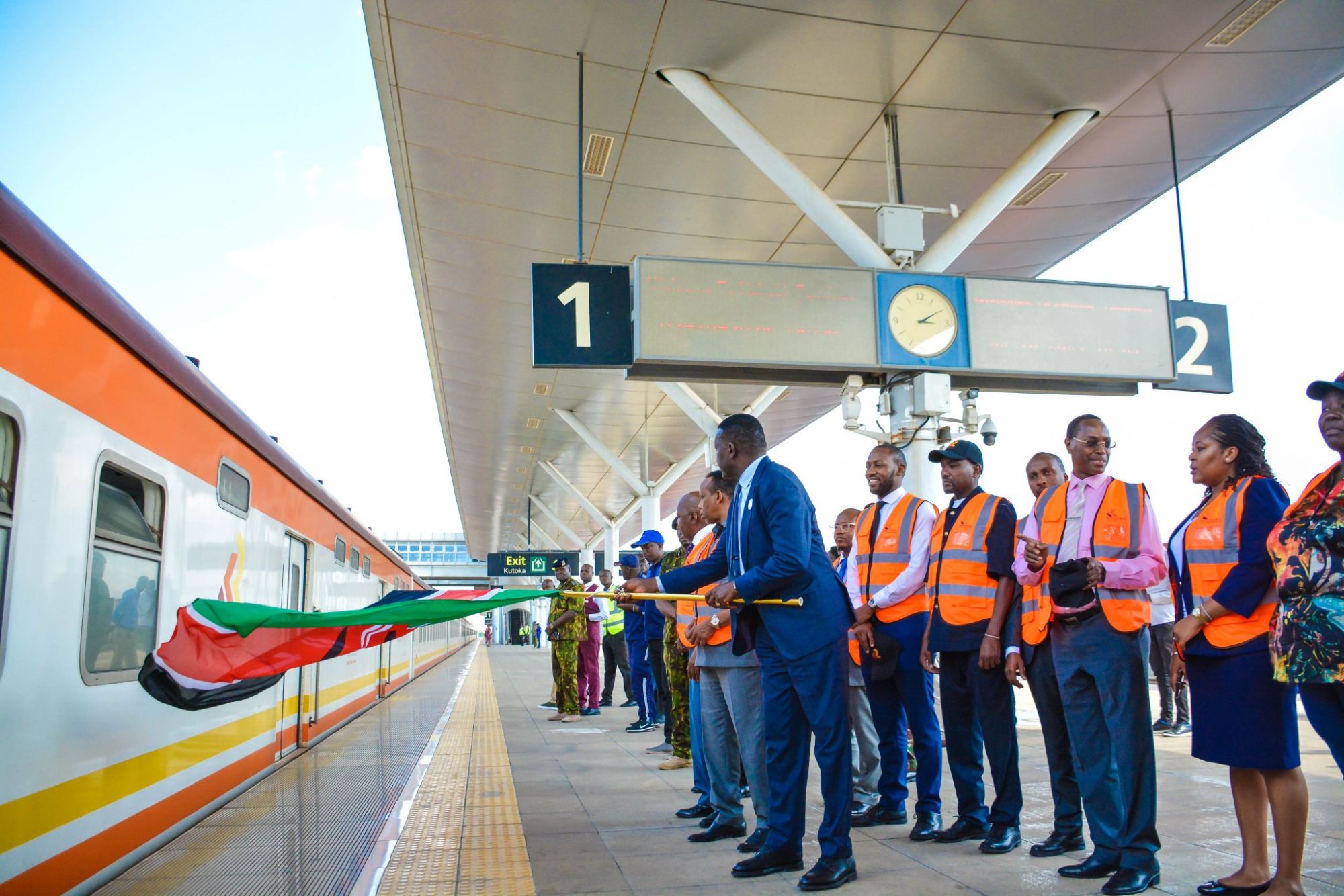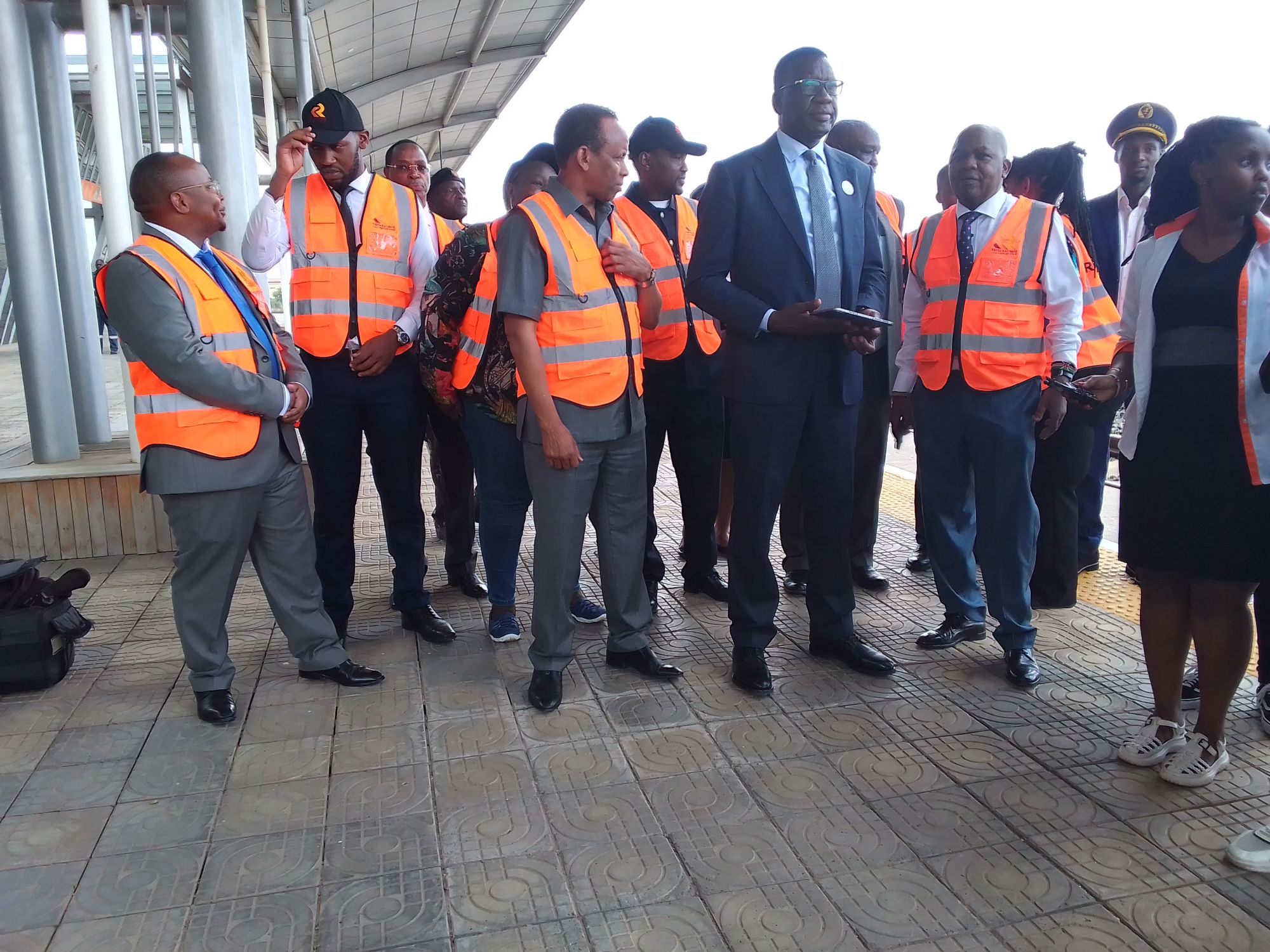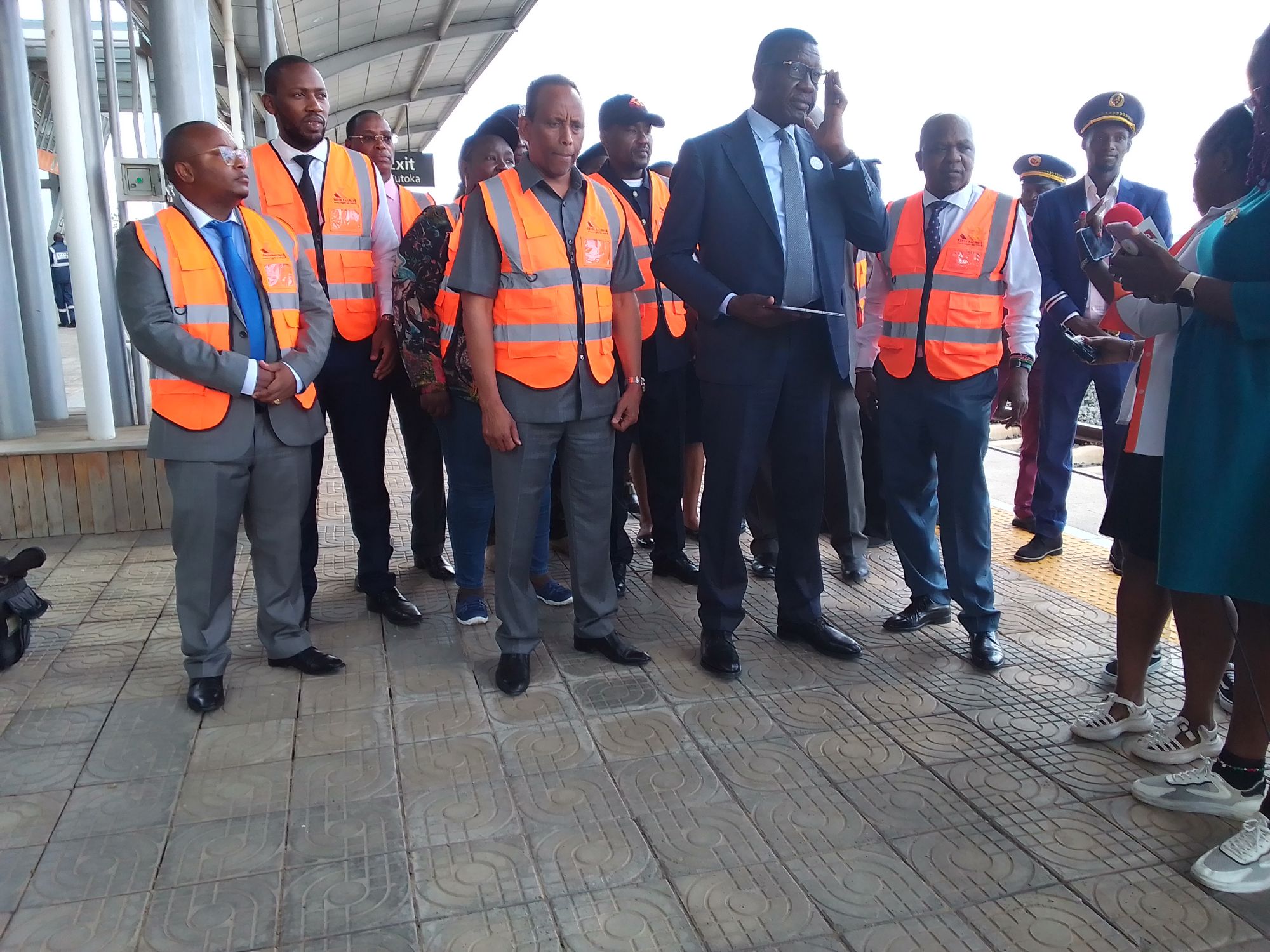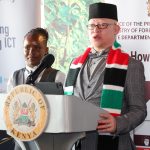The Cabinet Secretary for Roads and Transport, Davis Chirchir during the commissioning of the Nairobi Commuter Rail (NCR) station on Wednesday, October.
The Cabinet Secretary for Roads and Transport, Davis Chirchir, has officially launched the enhanced Nairobi Commuter Rail (NCR) service, describing it as a transformative step for the city’s transport network.
“The rehabilitation of the National Commuter Rail (NCR) network is a key pillar in our efforts to decongest roads and provide world-class transport services to the people of Nairobi,” said Chirchir. He added that the project involves rehabilitating 139 kilometers of railway track and constructing modern stations, which are expected to greatly improve the travel experience for thousands of daily commuters.

The new developments, spearheaded by the Ministry of Roads and Transport in collaboration with Kenya Railways, are part of the Nairobi Metropolitan Transport Master Plan. The initiative aims to ease congestion and modernize the rail system for safer, more reliable, and affordable urban mobility. It will also benefit Nairobi residents through upgrades in the city’s transportation network, including the commissioning of revamped NCR stations and the launch of a new Premium Class service.
The NCR system now covers four main routes connecting Nairobi Central Station to various locations in and around the city. The first route extends from Nairobi Central Station to Kikuyu, passing through Kibera and Dagoretti. Another corridor runs from Makadara to Ruiru, serving areas such as Dandora, Mwiki, Githurai, and Kahawa. A third line, spanning 75 kilometers, links the city center to Konza Technopolis City, with stops at several towns along the route. The final route, from Makadara to Embakasi Village, is set to serve residents in Donholm and Pipeline.

The enhancements to the railway stations are projected to increase passenger capacity from the current 20,000 daily commuters to an estimated 100,000 commuters by the 2024/2025 financial year. The World Bank has also pledged Ksh 65 billion to extend the network by an additional 58 kilometers. With the expanded rail lines, more residents will have access to safe, reliable, and affordable transport options.
In addition to the commuter service upgrades, the Cabinet Secretary launched a new Premium Class service on the Madaraka Express to cater to high-end travelers. This new service features luxurious coaches with only 28 seats per coach, offering spacious seating, fully reclining seats, complimentary meals, and onboard entertainment. Passengers will also enjoy priority boarding and free Wi-Fi, making their journey more comfortable and enjoyable.

These developments mark a new chapter in Nairobi’s transport system as the city positions itself as a hub for modern and efficient rail transport in the region. The project is expected not only to ease movement within Nairobi but also to stimulate economic growth and urban development along the rail corridors.
Read: https://kenyadailypulsenews.wordpress.com/2024/09/24/ps-omollo-calls-for-united-effort-to-tackle-cybersecurity-threats/
Beyond comfort and convenience, the revamped commuter rail system is set to have a significant environmental impact. By encouraging more residents to switch from road to rail, the project will help reduce air pollution and lower the city’s carbon footprint, contributing to a greener and more sustainable urban environment.
For Nairobi residents, these developments signal hope for a smoother and more efficient travel experience. With modernized stations, expanded rail lines, and enhanced services, the NCR project is poised to transform the way people move in the city, offering a reliable alternative to the chaotic road transport system. As the project progresses, commuters can look forward to a future where navigating Nairobi is no longer a daily struggle but an enjoyable and efficient experience.









